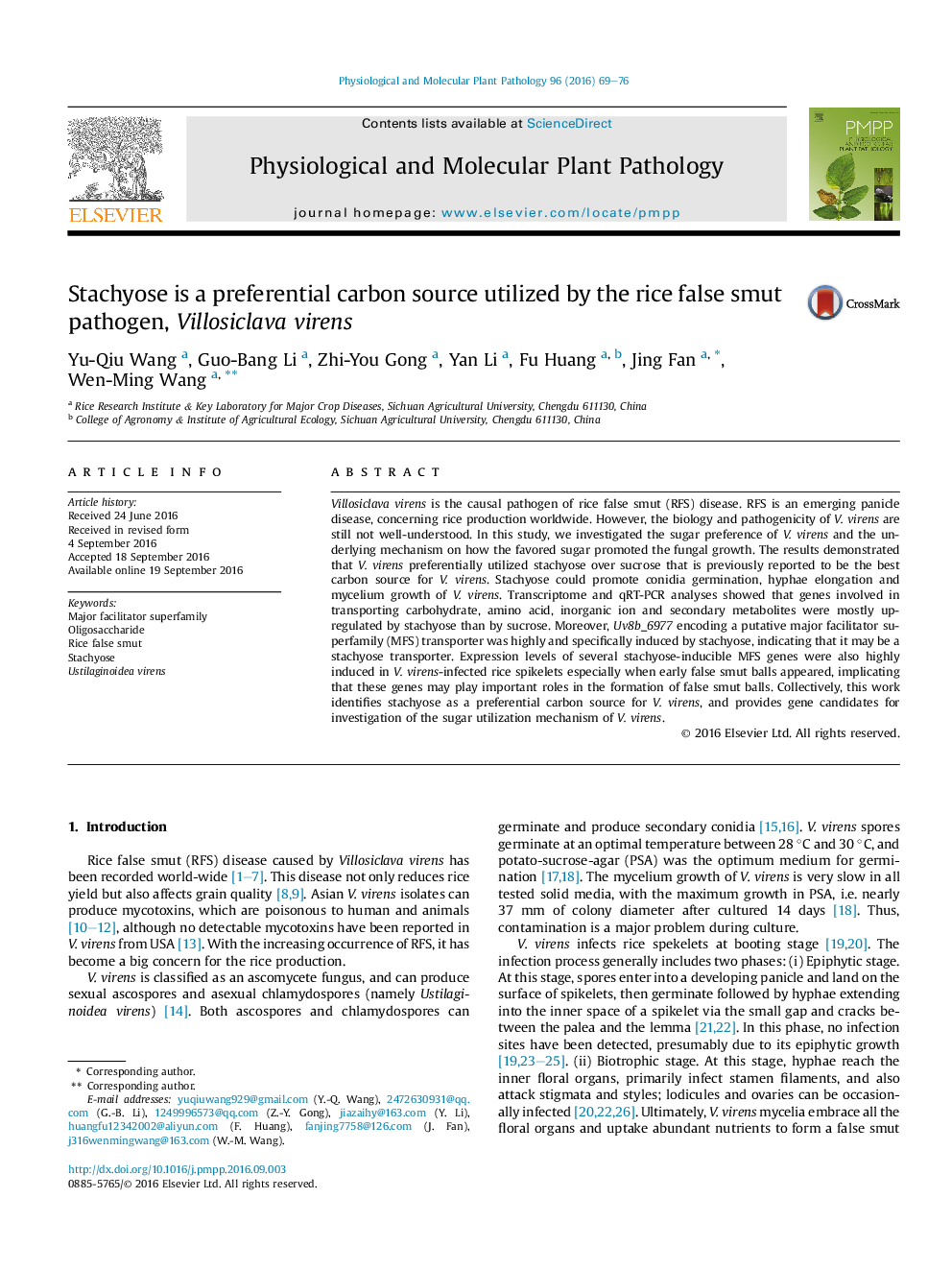| Article ID | Journal | Published Year | Pages | File Type |
|---|---|---|---|---|
| 5921036 | Physiological and Molecular Plant Pathology | 2016 | 8 Pages |
â¢Stachyose supports better growth of Villosiclava virens than sucrose does.â¢Stachyose favors the growth of other pathogens like Magnaporthe oryzae, Phytophthora capsici, and Rhizoctonia solani.â¢Transcriptome analysis reveals that stachyose could induce the expression of many genes involved in transport.â¢Candidate MFS gene Uv8b_6977 may be involved in stachyose transport.
Villosiclava virens is the causal pathogen of rice false smut (RFS) disease. RFS is an emerging panicle disease, concerning rice production worldwide. However, the biology and pathogenicity of V. virens are still not well-understood. In this study, we investigated the sugar preference of V. virens and the underlying mechanism on how the favored sugar promoted the fungal growth. The results demonstrated that V. virens preferentially utilized stachyose over sucrose that is previously reported to be the best carbon source for V. virens. Stachyose could promote conidia germination, hyphae elongation and mycelium growth of V. virens. Transcriptome and qRT-PCR analyses showed that genes involved in transporting carbohydrate, amino acid, inorganic ion and secondary metabolites were mostly up-regulated by stachyose than by sucrose. Moreover, Uv8b_6977 encoding a putative major facilitator superfamily (MFS) transporter was highly and specifically induced by stachyose, indicating that it may be a stachyose transporter. Expression levels of several stachyose-inducible MFS genes were also highly induced in V. virens-infected rice spikelets especially when early false smut balls appeared, implicating that these genes may play important roles in the formation of false smut balls. Collectively, this work identifies stachyose as a preferential carbon source for V. virens, and provides gene candidates for investigation of the sugar utilization mechanism of V. virens.
